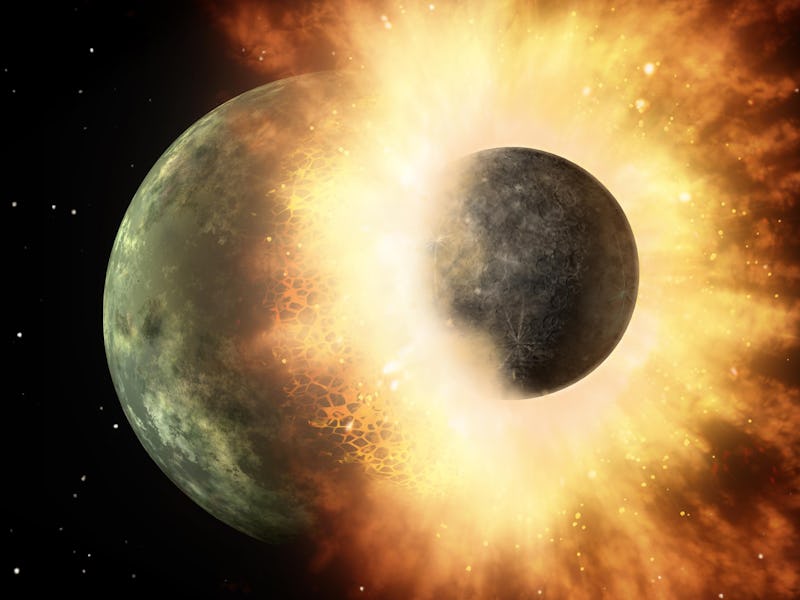NASA's James Webb Telescope Is More Powerful Than Even NASA Thought
It might even keep us safe from meteors.

The most powerful space telescope ever just got a little more powerful.
According to a new report, the James Webb Space Telescope (JWST) will be able to observe more asteroids and track them more closely than previously expected.
“JWST has strict requirements on pointing which could be problematic for the fastest moving Near Earth Objects (NEOs), but our study found that approximately 75 percent of known NEOs would meet the observability requirements during a given year,” said Christina Thomas, a researcher at the Planetary Science Institute.
The telescope will launch in 2018 and replace the renowned Hubble Telescope that graced all our childhoods with fantastic images of far-off galaxies. While the JWST will continue this mission of keeping us inspired, it is also tasked with keeping us informed of any objects that might collide with Earth.
It might be harder for the telescope to track the objects when they’re right next to us, due to the difficulty in rapidly adjusting the satellite, but the study found it should have no problem seeing just about all asteroids and comets beyond Mars, giving us plenty of heads up that our doom may be at hand.
The study also points out that the telescope will be valuable for more than just calling attention to doomsday meteors. It will also allow scientists to identify potentially nutrient-rich objects that long-distance space travelers might tap for resources like water.
“Near-Earth Objects are potential space resources and the James Webb Space Telescope will be one of the best tools to identify these resources that will help humanity expand beyond the Earth into our Solar System,” said PSI research scientist Vishnu Reddy, a co-author of the report.
It’s great to know the JWST is more powerful than we ever expected. It’s just a little disconcerting we’re only finding out now. Next thing we know, it’s 2018, the JWST forgot its glasses, and we’re all about to get a cosmic kiss from a comet that makes the dinosaurs sit up and take notice. We’re talking Deep Impact.